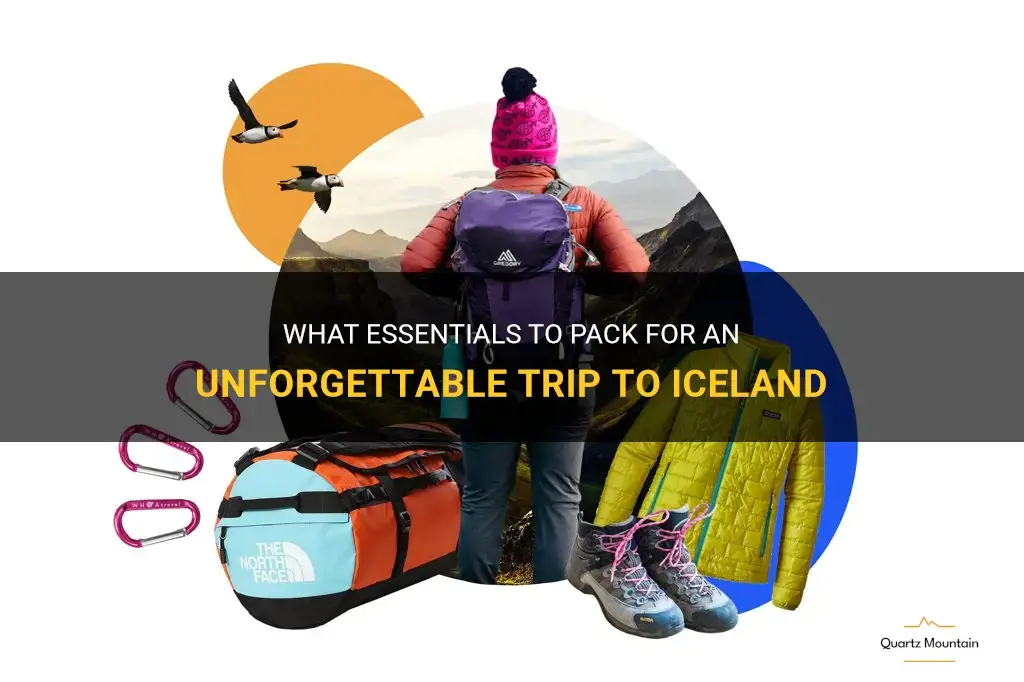
Are you planning a trip to Iceland? Known for its breathtaking landscapes, vibrant culture, and unique natural wonders, Iceland is truly a traveler's dream destination. But before you embark on this unforgettable adventure, it's essential to pack the right essentials to ensure a comfortable and enjoyable experience. From warm clothing to essential gadgets, this guide will help you prepare for your trip to Iceland and make the most out of your time in this beautiful country. So, grab your suitcase and get ready to explore the land of fire and ice like never before.
| Characteristics | Values |
|---|---|
| Weather | Cold and unpredictable |
| Temperature | Average high of 5°C (41°F) and average low of -1°C (30°F) |
| Clothing | Warm, waterproof, and layered clothing |
| Footwear | Waterproof boots or sturdy hiking shoes |
| Accessories | Hat, gloves, scarf, and thermal socks |
| Outdoor Gear | Rain jacket, insulated jacket, and waterproof pants |
| Miscellaneous | Swimsuit (for hot springs), sunglasses, and sunscreen |
| Electronics | Camera, extra batteries, and travel adapter |
| Medications | Personal medications and basic first aid kit |
| Toiletries | Toothbrush, toothpaste, shampoo, conditioner, and moisturizer |
| Documents | Passport, travel insurance, and copies of important documents |
| Money | Local currency (Icelandic Króna) and credit/debit cards |
| Snacks and Water | Energy bars, snacks, and reusable water bottle |
| Maps and Guides | Maps, guidebooks, and travel apps |
| Language | English is widely spoken, but some knowledge of Icelandic helps |
| Emergency Contact | Emergency contact numbers and addresses |
| Transportation | Rental car or public transportation options |
| Safety | Emergency whistle, flashlight, and emergency contact info |
| Photography | Tripod, filters, and extra memory cards |
What You'll Learn
- What are the essential items to pack for a trip to Iceland?
- What type of clothing should I pack for varying weather conditions in Iceland?
- Are there any specific items or gear I should bring for outdoor activities such as hiking or camping in Iceland?
- Are there any restrictions on what items I can bring into Iceland?
- Are there any specific items or gear I should pack for a visit to the Blue Lagoon or other natural hot springs in Iceland?

What are the essential items to pack for a trip to Iceland?

When planning a trip to Iceland, it is important to pack the essential items that will help you stay prepared and comfortable in this unique and beautiful country. From the unpredictable weather to the rugged terrain, Iceland presents its own set of challenges and requirements. Here are some essential items that you should consider packing for a trip to Iceland.
- Layered Clothing: Iceland's weather can be unpredictable, with rapid changes in temperature and frequent rain, wind, or snow. It is essential to pack layered clothing to cater to these varying conditions. Opt for thermal base layers, good quality waterproof and windproof jacket and trousers, warm sweaters, and a sturdy pair of hiking boots. Additionally, don't forget to pack a hat, gloves, and a scarf to protect yourself from cold temperatures.
- Rain Gear: Given Iceland's reputation for rain, it is crucial to pack adequate rain gear. A high-quality waterproof jacket and trousers are a must to keep yourself dry during unexpected downpours. A poncho or a rain cover for your backpack is also useful to protect your belongings.
- Hiking Equipment: Iceland offers unparalleled opportunities for hiking and exploring its natural wonders. It is important to pack essential hiking equipment such as a sturdy backpack, a reliable compass, a GPS device, a good map, and a whistle for emergencies. Additionally, consider carrying a hiking pole to assist you on some of the more challenging terrains.
- Travel Adapter: Iceland uses type C or F electrical outlets, which can be different from those used in other countries. It is essential to pack a travel adapter to ensure that you can charge your electronic devices and use them without any hassle.
- First Aid Kit: When venturing into the outdoors, it is always prudent to have a basic first aid kit. Include essentials such as band-aids, antiseptic cream, pain relief medication, blister plasters, and any prescription medication you may require.
- Travel Insurance: Prior to your trip, it is crucial to obtain comprehensive travel insurance that covers medical expenses, trip cancellations, lost luggage, and other unforeseen events. Iceland's remote location and challenging terrain make travel insurance a necessity to protect yourself and your belongings.
- Swimwear: Despite its chilly climate, Iceland is known for its geothermal pools and hot springs. Packing swimwear is essential if you plan to indulge in these relaxing and therapeutic experiences. Most accommodations provide towels, but it's always wise to bring your own quick-drying towel.
- Camera and Binoculars: Iceland's stunning landscapes and abundant wildlife offer many photography opportunities. Make sure to pack a good camera, spare batteries, memory cards, and lens cleaning equipment to capture these magical moments. Binoculars can also come in handy for birdwatching and spotting wildlife from afar.
- Reusable Water Bottle and Food: Iceland's tap water is some of the cleanest in the world, so packing a reusable water bottle is a sustainable and economical choice. Additionally, it is advisable to carry some snacks and energy bars, especially when exploring remote areas with limited food options.
- Personal Care Items: Don't forget to pack your personal care items such as toiletries, sunscreen, lip balm, and insect repellent. The wind and cold temperatures can be harsh on your skin, so it's essential to protect yourself adequately.
In conclusion, packing the right items for a trip to Iceland can make a significant difference in your comfort and overall experience. By considering the unique weather, rugged terrain, and natural wonders, you can ensure that you are well-prepared to tackle the challenges and fully enjoy all that Iceland has to offer. Happy travels!
Packing Guide for a June Visit to Arches National Park: Essential Items to Bring
You may want to see also

What type of clothing should I pack for varying weather conditions in Iceland?
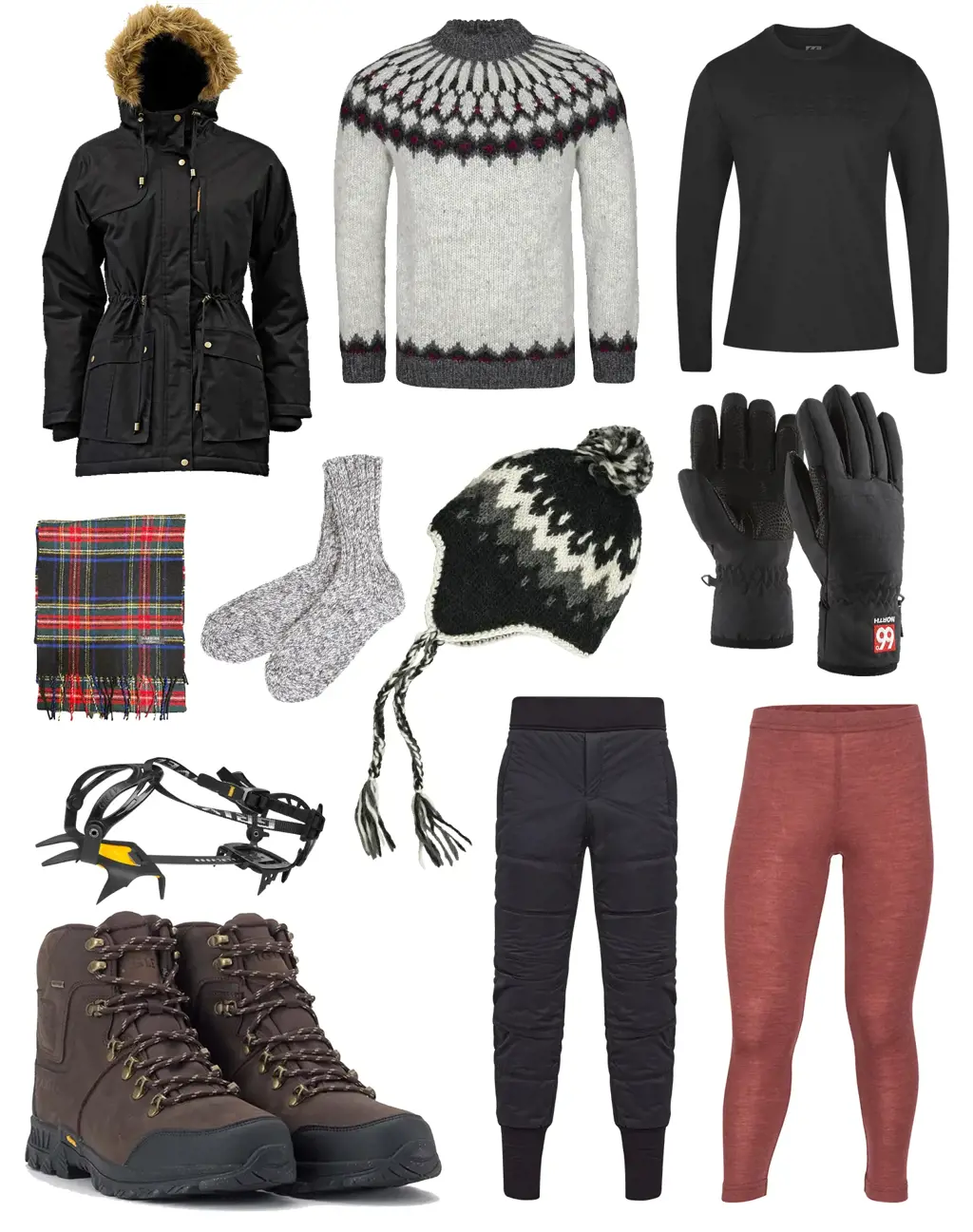
When packing for a trip to Iceland, it is important to consider the country's varying weather conditions. Iceland experiences a temperate maritime climate, which means that the weather can change rapidly throughout the day. It is common to experience rain, wind, and even snow, even in the summer months. Therefore, it is important to pack clothing that is versatile and can be layered to suit different conditions.
Here are some guidelines for packing the right clothing for varying weather conditions in Iceland:
- Base Layers: Start with a good set of base layers made of synthetic or wool materials. These will help to regulate your body temperature and keep you warm and dry. Thermals, long-sleeved tops, and leggings are essential.
- Mid-layers: Opt for fleece jackets, sweaters, or lightweight down jackets to provide warmth in cold conditions. These can be easily added or removed depending on the temperature.
- Outer Layers: A waterproof and windproof jacket is a must-have item for Iceland. Look for a jacket with sealed seams and a hood to keep you dry in rainy or snowy conditions.
- Trousers: Pack a pair of waterproof and windproof trousers to wear over your base layers. These will keep your legs dry and protected from the elements.
- Accessories: Don't forget to pack accessories such as hats, gloves, scarves, and thermal socks. These will help to keep your extremities warm and prevent heat loss.
- Footwear: Invest in a good pair of waterproof and sturdy hiking boots. Iceland's terrain can be rugged and uneven, so it is important to have footwear that provides support and protection. Also, pack a pair of lightweight shoes or sandals for indoor use and to let your feet breathe.
- Swimwear: Iceland is known for its geothermal hot springs and swimming pools. Don't forget to pack your swimwear, as these natural hot springs are a popular attraction among tourists.
- Layering: The key to dressing for varying weather conditions in Iceland is layering. This allows you to add or remove clothing as the temperature fluctuates throughout the day. Layering also helps trap heat and regulate your body temperature.
For example, you can start with a base layer of thermal leggings and a long-sleeved top, add on a fleece jacket or sweater for additional warmth, and top it off with a waterproof and windproof jacket. This way, you can easily adjust your clothing according to the weather conditions.
It is also advisable to check the weather forecast before your trip and pack accordingly. This will help you make more informed decisions about what to wear each day.
In conclusion, packing the right clothing for varying weather conditions in Iceland is crucial to staying comfortable and protected during your trip. By following these guidelines and layering your clothing, you can be well-prepared for the ever-changing Icelandic weather.
Essential Items to Pack for a Memorable Trip to Sacramento
You may want to see also

Are there any specific items or gear I should bring for outdoor activities such as hiking or camping in Iceland?
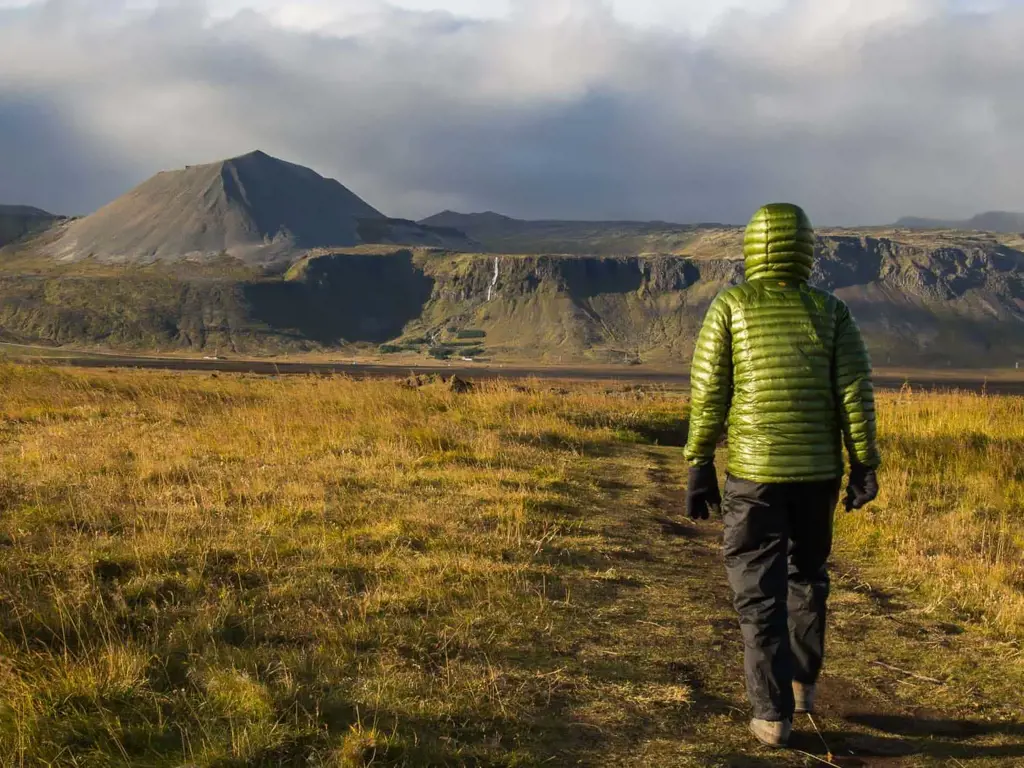
When venturing into the great outdoors in Iceland, it's crucial to come prepared with the right equipment and gear. The country's unique climate and terrain require specific items to ensure your safety and comfort during activities such as hiking or camping. Whether you're planning a day hike or a multi-day expedition, here are some essential items you should bring with you for outdoor activities in Iceland.
Proper Clothing:
Iceland's weather can be unpredictable, so it's important to dress in layers and be prepared for all conditions. Start with a moisture-wicking base layer to keep you dry, followed by a warm insulation layer such as a fleece or down jacket. A waterproof and windproof outer shell is essential to protect against rain, wind, and even snow. Don't forget to bring a hat, gloves, and warm socks to keep your extremities comfortable, as well as sturdy and waterproof hiking boots.
Backpack:
A good backpack is essential for carrying all your gear while hiking or camping in Iceland. Look for a backpack that is lightweight, durable, and has adjustable straps for a comfortable fit. Make sure it has enough capacity to hold all your essentials, including food, water, extra clothing, and any additional gear you may need.
Navigation Tools:
When exploring the Icelandic wilderness, it's crucial to have reliable navigation tools. A GPS device or a smartphone with offline maps can be helpful, but it's always wise to carry a traditional compass and a detailed map of the area you'll be visiting. Becoming familiar with basic map reading and compass skills can come in handy if you encounter any technical difficulties with your gadgets.
Water and Food:
Staying hydrated is crucial when engaging in outdoor activities, especially in Iceland's cold and windy climate. Always carry an adequate supply of water, as natural water sources may not be safe for consumption. Pack lightweight and high-energy snacks like trail mix, energy bars, and dried fruits to keep you energized throughout the day.
Emergency Supplies:
In case of unexpected situations, it's important to have a few emergency supplies on hand. These can include a first aid kit, a headlamp or flashlight, a whistle, a fire starter, and a multi-tool. Additionally, pack a lightweight emergency shelter, such as a bivvy bag or a space blanket, to protect yourself in case you need to spend an unexpected night outdoors.
Sun Protection:
Even on cloudy days, Iceland's high latitude means that the sun's rays can be harsh and damaging. Protect yourself by wearing sunscreen, sunglasses, and a hat to shield your face from the sun. Iceland's winds can be strong, so make sure to choose sunglasses that wrap around your face for added protection.
Camera and Binoculars:
Iceland is known for its stunning landscapes and abundant wildlife, so don't forget to pack a camera to capture the breathtaking scenery and any wildlife encounters you may have. Binoculars can also be useful for spotting distant birds or wildlife and getting a closer look at Iceland's natural wonders.
Remember, it's always better to be over-prepared than under-prepared when venturing into the Icelandic outdoors. Always check the weather forecast before you head out and let someone know your itinerary. By having the right gear and equipment, being cautious, and respecting nature, you can have a safe and enjoyable outdoor adventure in Iceland.
Essential Items to Pack for a Memorable Cruise to Turks and Caicos
You may want to see also

Are there any restrictions on what items I can bring into Iceland?
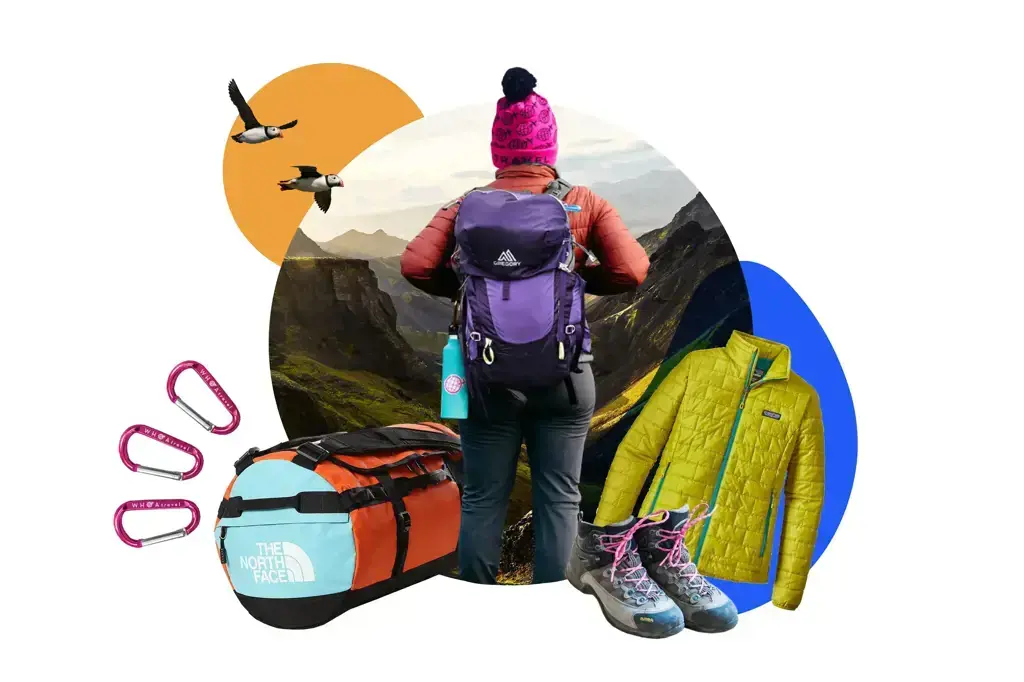
If you're planning a trip to Iceland and you're wondering what items you can bring with you, it's important to be aware of the restrictions in place. Iceland has certain rules and regulations when it comes to what you can bring into the country, in order to protect its unique environment and economy. Here's a guide to help you understand the restrictions and ensure a smooth journey.
- Prohibited items: There are certain items that are strictly prohibited from being brought into Iceland. These include firearms and ammunition, explosive materials, illegal drugs, counterfeit currency, and certain types of animal or plant products. It's important to familiarize yourself with these restrictions before traveling to avoid any legal trouble.
- Restricted items: While some items are prohibited, there are others that are restricted and require special permits or documentation to be brought into Iceland. These include certain types of medications, live animals, plants, and products made from protected wildlife species. It's essential to check the Icelandic Food and Veterinary Authority website for a comprehensive list of restricted items and the necessary permits required for their importation.
- Food and agricultural products: Iceland has strict regulations on the importation of food and agricultural products due to the risk of introducing foreign pests and diseases. Certain items, such as fresh fruits and vegetables, meat and dairy products, and honey, are subject to inspection and may require special documentation or treatment before being allowed into the country. It's advisable to declare any such items to the customs officials upon arrival to avoid any fines or confiscation.
- Duty-free allowance: Iceland allows travelers to bring in a certain amount of duty-free goods. This includes alcoholic beverages (up to 1 liter of spirits or 1.5 liters of wine), tobacco products (200 cigarettes or 250 grams of tobacco), and other goods with a total value of up to 430 Euros. Anything exceeding these limits may be subject to customs duties.
- Souvenirs and gifts: If you plan to purchase souvenirs or gifts during your trip, it's important to keep in mind the restrictions on certain items. Products made from protected wildlife species, such as fur, ivory, and certain types of leather, may be subject to strict import regulations. It's best to check with the customs authorities or the Icelandic Ministry for the Environment and Natural Resources for guidance on what is allowed.
Overall, it's important to be aware of the restrictions on items you can bring into Iceland to avoid any legal or logistical issues. Familiarize yourself with the prohibited and restricted items, as well as the necessary permits and documentation required. By following these guidelines, you can ensure a smooth journey and contribute to the preservation of Iceland's unique environment.
Essential Items to Pack for London in September: A Comprehensive Guide
You may want to see also

Are there any specific items or gear I should pack for a visit to the Blue Lagoon or other natural hot springs in Iceland?
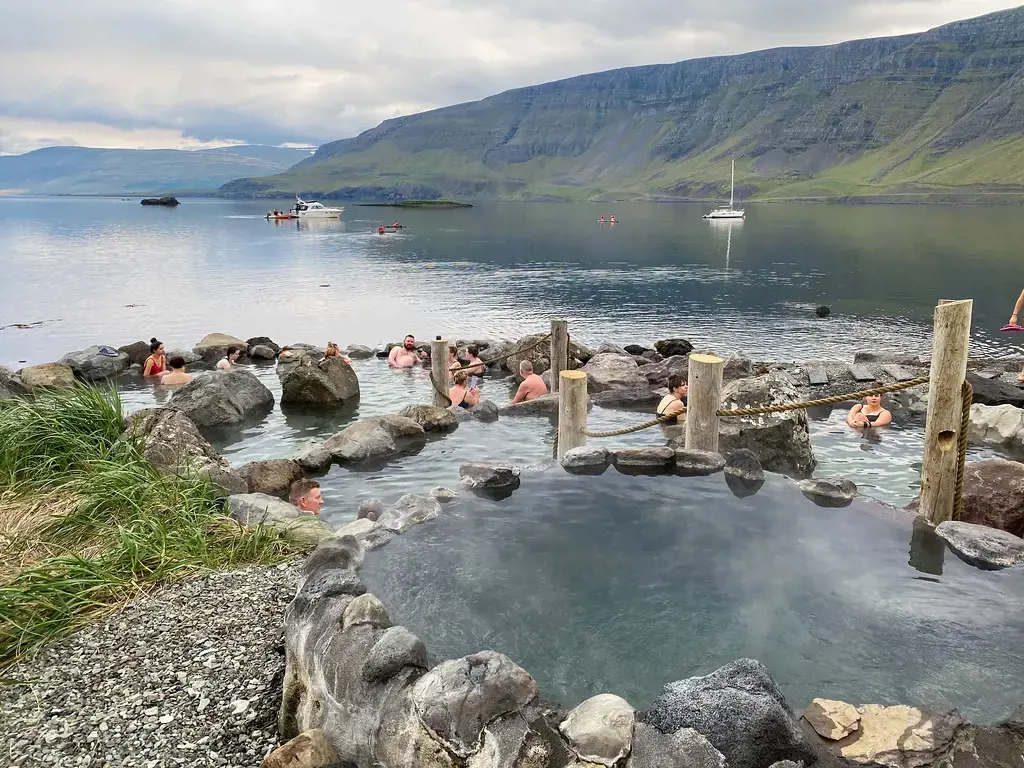
When planning a visit to the Blue Lagoon or other natural hot springs in Iceland, it's important to pack the right items and gear to ensure a comfortable and enjoyable experience. Here are some specific items you should consider bringing:
- Swimsuit: A swimsuit is essential for enjoying the hot springs. It's recommended to bring a sturdy and comfortable swimsuit that allows freedom of movement. Avoid wearing loose clothing or materials that may get damaged by the mineral-rich water.
- Towel: It's important to bring a towel to dry off after your time in the hot springs. Microfiber towels are a great option as they are lightweight, absorbent, and quick-drying. This can be convenient, especially if you plan on visiting multiple hot springs during your trip.
- Flip flops or waterproof sandals: The pathways around the Blue Lagoon and other hot springs can be slippery, so it's advisable to bring flip flops or waterproof sandals to protect your feet. These will also make it easier to move from one area to another without slipping or getting your regular shoes wet.
- Waterproof phone case: To capture the stunning views and share your experience on social media, it's a good idea to bring a waterproof phone case. This will allow you to take pictures and videos without worrying about the water damaging your phone.
- Hair conditioner and leave-in treatment: The mineral-rich water in the hot springs can be harsh on your hair, leaving it feeling dry and tangled. To combat this, it's recommended to bring a deep conditioner or leave-in treatment to apply before and after your time in the hot springs. This will help keep your hair soft and manageable.
- Waterproof camera: If you're an avid photographer or simply want to ensure the best quality pictures, it's worth investing in a waterproof camera. These cameras are designed to withstand water submersion and will allow you to capture the beauty of the hot springs without worrying about damaging your equipment.
- Sunscreen: Even though Iceland is known for its cool temperatures, it's still important to protect your skin from the sun's harmful rays. The reflection of the water can intensify the effects of the sun, so be sure to pack a high SPF sunscreen and apply it generously before entering the hot springs.
- Water bottle: It's vital to stay hydrated while enjoying the hot springs. Bringing a reusable water bottle will allow you to drink plenty of water and avoid dehydration. Some hot springs even have water stations where you can refill your bottle.
- Dry bag or waterproof backpack: To keep your belongings dry and safe during your visit, consider bringing a dry bag or waterproof backpack. This will protect your items from water splashes or unexpected rainfall.
Overall, packing the right items and gear for your visit to the Blue Lagoon or other natural hot springs in Iceland is crucial for a comfortable and enjoyable experience. Consider the specific needs of the hot springs you plan to visit, and ensure you have everything you need to make the most of your time there.
The Essential Packing List for a Two-Week Trip to Hawaii with a Toddler
You may want to see also
Frequently asked questions
When packing for your trip to Iceland, it is essential to be prepared for the ever-changing weather conditions. You should pack warm layers such as thermal wear, wool sweaters, and a waterproof and windproof jacket. It is also recommended to bring hats, scarves, and gloves to protect yourself from the cold wind. Don't forget to pack sturdy waterproof footwear for outdoor activities.
No, you do not need to pack insect repellent for your trip to Iceland. Iceland is known to have very few insects due to its climate and wind. You are unlikely to encounter any mosquito or tick problems during your visit.
Yes, it is highly recommended to pack a bathing suit for your trip to Iceland. Iceland is known for its geothermal hot springs and natural hot pools, such as the Blue Lagoon. These attractions offer visitors the opportunity to relax in warm waters while surrounded by stunning scenery. So, make sure to pack your bathing suit to fully enjoy these unique experiences.







